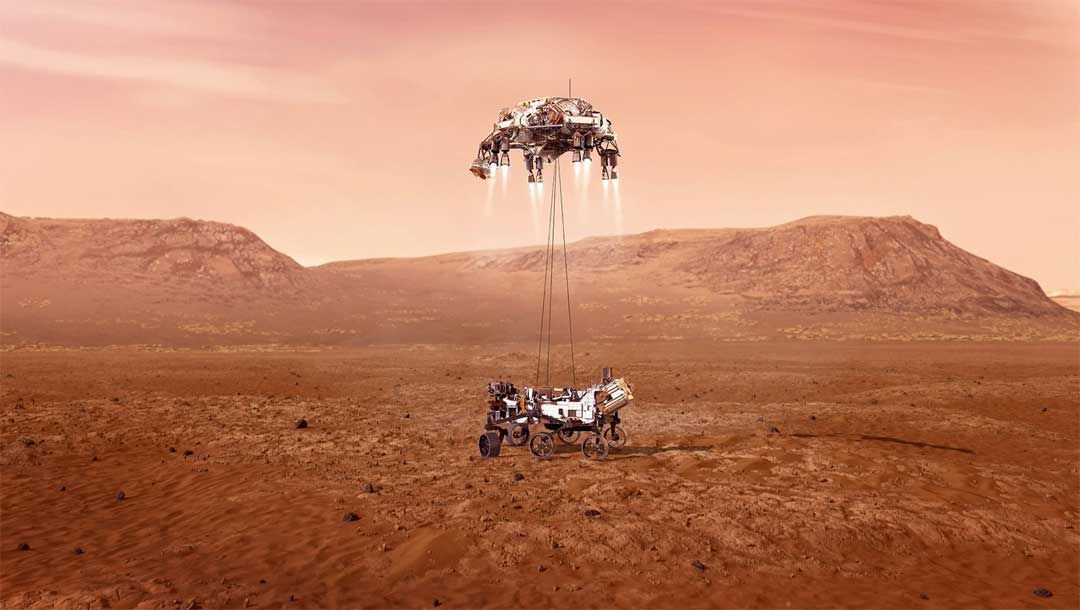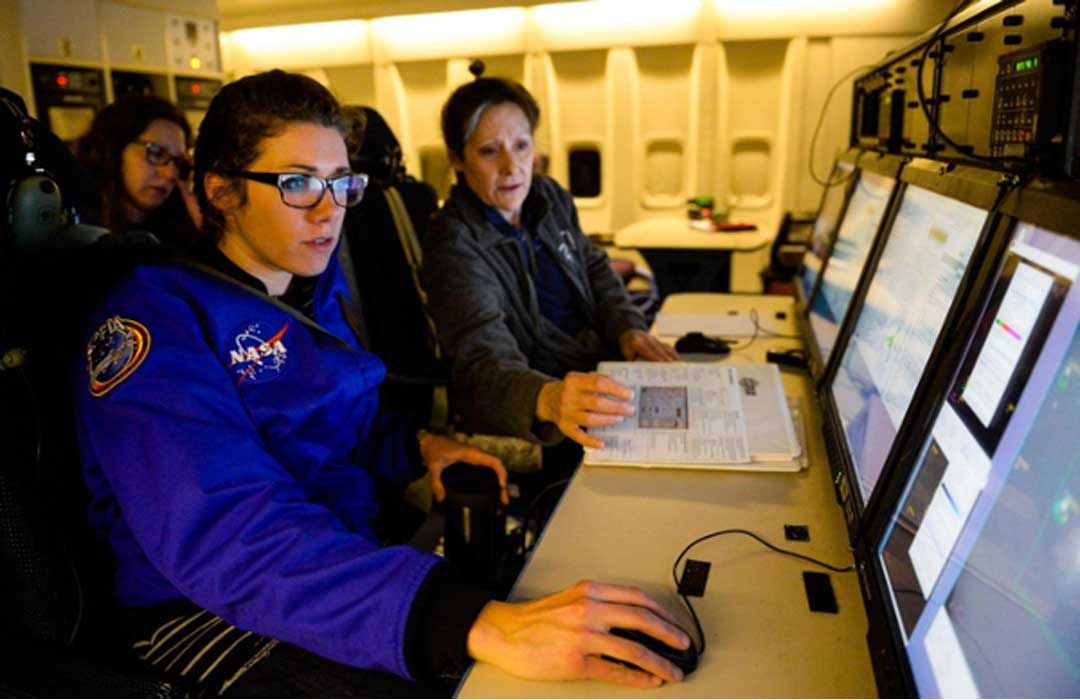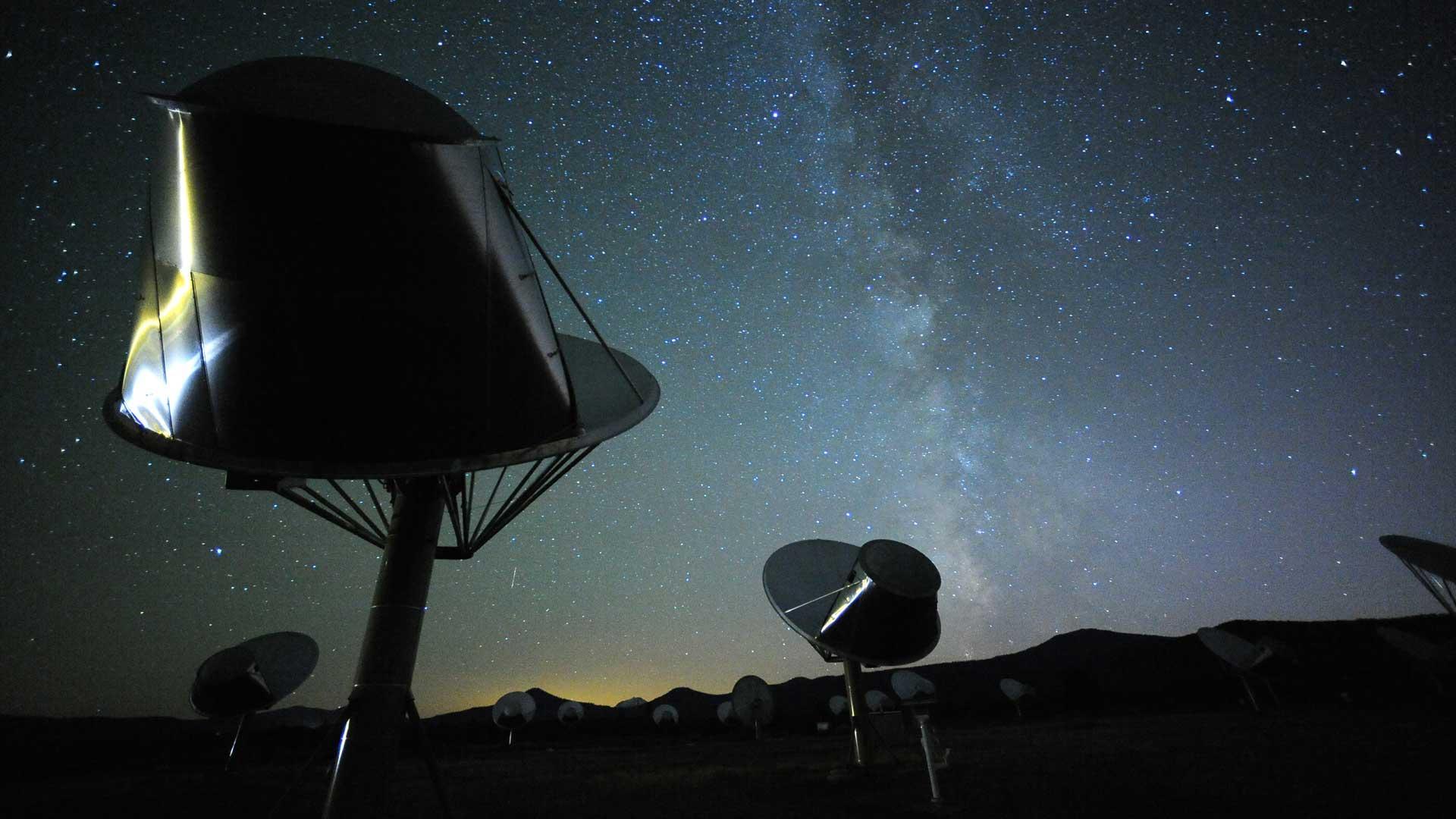
NASA’s Perseverance rover is now on Mars. Its mission is to search for signs of past life on Mars and collect rock and soil samples for possible return to Earth. Adding this effort to existing technosignature searches, researchers are hopeful that finding evidence of life beyond Earth in our lifetime may be possible.
In a comment published in Nature Astronomy, Dr. Nathalie Cabrol, Director of the Carl Sagan Center for Research at the SETI Institute, challenges assumptions about the possibility of modern life on Mars held by many in the scientific community.
As the Perseverance rover embarks on a journey to seek signs of ancient life in the 3.7 billion years old Jezero crater, Cabrol theorizes that not only life could still be present on Mars today, but it could also be much more widespread and accessible than previously believed.
“You can walk on the same landscape for miles and find nothing. Then, maybe because the slope changes by a fraction of a degree, the texture or the mineralogy of the soil is different because there is more protection from UV, all of a sudden, life is here. What matters in extreme worlds to find life is to understand the patterns resulting from these interactions.” (Nathalie Cabrol)
Down the ages, one of humanity’s most perplexing questions has been, are we alone in the universe? … For the past 40 years, astronomers at the U.S.-based SETI Institute have tried to answer that question by looking for radio signals originating beyond our solar system…If life beyond our own planet is to be found, at least in our lifetime, the Red Planet is the best hope…It would indeed be a mighty thing if human ingenuity and perseverance revealed that life does exist beyond our own small corner of the universe. (The Times Colonist)
- Nature Astronomy: Tracing a Modern Biosphere on Mars
- The Times Colonist: Editorial: Mars our best hope to find life beyond our own planet
- SETI.org: Is there Life on Mars Today - and Where?
- SETI.org: Why Martian Pond Scum Would Change the World
- SETI.org: Martian Landslides Caused by Underground Salts and Melting Ice?
 What Animals Reveal About Aliens and Ourselves
What Animals Reveal About Aliens and OurselvesCambridge University zoologist Dr. Arik Kershenbaum discusses his book, The Zoologist’s Guide to the Galaxy: What Animals on Earth Reveal About Aliens – and Ourselves, and his fascinating astrobiological journey in an interview with Psychology Today.
It seems a weird topic for a zoologist, I know! But a few years ago I organised a workshop on animal communication, and a physicist named Laurance Doyle from the SETI Institute wrote to me asking to take part. Why would a physicist want to come to an animal behaviour meeting? Actually, he had previously written articles claiming that we won’t be able to understand alien language (when we finally meet them) unless we first can understand animal language. We got talking, and I became fascinated by this idea of what might be shared between animal, human, and alien languages. (Psychology Today)
- Psychology Today: What Animals Reveal About Aliens and Ourselves
- SETI.org: Humpback Whale Communication and the Search for Alien Intelligence
 Asteroid Apophis: Huge ‘God Of Chaos’ Rock
Asteroid Apophis: Huge ‘God Of Chaos’ RockAstronomers observed Asteroid Apophis as it passed by Earth in late February - early March to learn as much as possible in preparation for the next and possibly more dangerous flyby anticipated for in 2029.
Although there’s no danger to Earth this time, the once-a-decade flyby of the infamous near-Earth asteroid Apophis—officially called 99942 Apophis and named after the Egyptian god of chaos—is an important opportunity for astronomers to get ahead of a potentially devastating event in the near future.
“If Apophis impacted Earth, the results would be devastating,” said Franck Marchis, senior astronomer at the SETI Institute and Chief Scientific Officer at Unistellar, which organized an observing campaign on February 21, 2021 as Apophis passed in front of a star as seen from a path across the US. “To anticipate and prevent an impact, we have to learn as much as possible about this asteroid.” (Forbes)
- Forbes: Asteroid Apophis: Huge ‘God Of Chaos’ Rock Will This Weekend Flyby Earth But What Happens Next Time?
- SETI.org: We Got It!
 World’s Largest Messier Marathon
World’s Largest Messier MarathonThis year’s Messier Marathon included an attempt by Unistellar to set a world record for the largest Messier Marathon event. Participation in the Messier race ranged from all-night to just one hour, including options like Messier ‘til Midnight, Messier 6K and the Galaxy Sprint. While they didn’t officially break the record, more than 700 citizen astronomers participated in the event.
Unistellar, the start-up behind the eVscope telescope, hopes to set the world record for the largest Messier Marathon event. Setting a world record is no simple task, so Unistellar has teamed up with partners around the world including SETI Institute in San Francisco, Palais de la Découverte in Paris, UCLA Planetarium, Osaka Museum, Chabot Space + Science Center, Geneva Lake Astrophysics, and STEAM and The Bishop Museum of Science and Nature, among others. (Forbes)
 Three Santa Clarita science teachers chosen for Airborne Astronomy Ambassadors Program
Three Santa Clarita science teachers chosen for Airborne Astronomy Ambassadors ProgramSeveral science teachers nationwide from high schools, middle schools and community colleges are delighted to be among the thirty teachers selected by the SETI Institute to be 2021 NASA Airborne Astronomy Ambassadors (AAAs). As part of the professional development program, they receive specialized training and curriculum designed to encourage STEM studies that they can take back to their classrooms and an exciting opportunity to fly on the Stratospheric Observatory for Infrared Astronomy (SOFIA).
Marisa Heflin, Shelley Turski and Stacy Wade-Robb were selected to board NASA’s Stratospheric Observatory for Infrared Astronomy (SOFIA). Teachers across the country applied for the opportunity in November, and 30 were chosen as a part of a collaboration with the nonprofit SETI Institute.
“To actually be able to see the science we’ve been teaching for years being used in real situations, with real scientists, it just sets off all my nerd bells,” Turski, a teacher at La Mesa Junior High, said. “I go crazy for all that stuff.”
“The biggest excitement for me is to just being able to bring it back to my students and share that,” Heflin said.
“I work at a Title I school in Santa Clarita,” Turski said. “These are students that don’t really get much exposure to things beyond your traditional schools. I’m really excited to bring that to them, to encourage their interest in STEM careers.”
“Go STEM! Women in STEM! It’s really cool that we’re three women that got chosen from Santa Clarita,” Wade-Robb said. (KTLA 5)
- KTLA 5: ‘It just sets off all my nerd bells’: 3 Santa Clarita science teachers chosen for NASA mission flight
- The Atlanta Journal-Constitution: Cobb teachers named 2021 NASA ambassadors
- Marietta Daily Journal: 3 more Cobb teachers selected as NASA ambassadors
- KyForward: Winburn Middle School teacher Jenny McCall named 2021 NASA Airborne Astronomy Ambassador
- Patch: Maryland Professor To Train At NASA Astronomy Research Facility
- HometownStation.com: Three Hart District Teachers Chosen For NASA Flight
- SETI.org: 30 Teachers Selected as Airborne Astronomy Ambassadors to Bring NASA Science to Classrooms
 Hat Creek Observatory gets upgrade to comb galaxy for extraterrestrials
Hat Creek Observatory gets upgrade to comb galaxy for extraterrestrialsThe radio telescope array at the Hat Creek Radio Observatory, known as the Allen Telescope Array (ATA), is getting an upgrade to improve range and sensitivity. The ATA searches for signs of extraterrestrial life in deep space.
Hat Creek Observatory in eastern Shasta County is getting an upgrade to make its radio telescopes better able to explore deep space.
The purpose is to help astronomers search for signs of extraterrestrial life throughout the universe, starting with our own galaxy.
Making a detailed survey of the Milky Way is the first of many projects SETI Institute scientists plan at the observatory once upgrades are completed, said Wael Farah, the observatory's resident astronomer. (mtshasta news)
- mtshasta news: Hat Creek Observatory gets upgrade to comb galaxy for extraterrestrial life
- SETI.org: Qualcomm Founder Franklin Antonio Funds Allen Telescope Array Upgrade Program
DecodeHer
They were pioneers in their fields, yet their names are scarcely known – because they were women. We examine the accomplishments of two women who pioneered code-breaking and astronomy during the early years of the twentieth century and did so in the face of social opprobrium and a frequently hostile work environment.
Henrietta Leavitt measured the brightnesses of thousands of stars and discovered a way to gauge the distances to galaxies, a development that soon led to the concept of the Big Bang.
Elizabeth Friedman, originally hired to test whether William Shakespeare really wrote his plays, was soon establishing the science of code-breaking, essential to success in the two world wars.
Also, the tech industry is overwhelmingly male. Girls Who Code is an initiative to redress the balance by introducing girls to computer programming, and encouraging them to follow careers in tech.
Join guests Lauren Gunderson, Jason Fagone and Reshma Saujani as they discuss two women who blazed the trail with great accomplishments in code-breaking and astronomy, as well as a look at the encouraging initiative Girls Who Code in DecodeHer.
In Living Color
The world is a colorful place, and human eyes have evolved to take it in – from vermillion red to bright tangerine to cobalt blue. But when we do, are you and I seeing the same thing?
Find out why color perception is a trick of the brain, and why you and I may not see the same shade of green. Or blue. Or red. Also, platypuses and the growing club of fluorescent mammals, and the first new blue pigment in more than two centuries.
Join guests Paula Anich, Michaela Carlson, Rob DeSalle and Mas Subramanian to hear about color, including how color is perceived, fluorescent mammals, and a new blue pigment in In Living Color.
Eclectic Company
We present a grab bag of our favorite recent science stories – from how to stop aging to the mechanics of cooking pasta. Also, in accord with our eclectic theme – the growing problem of space junk.
Join guests Anthony Wyss-Coray, Oliver O’Reilly and Moriba Jah to look at the issues associated with ‘space junk’ and a mixed bag of popular science stories in Eclectic Company.
For more information and the archive of past shows, visit the Big Picture Science website.
Recent SETI Live episodes include:
- Life on Venus? Hold your horses! - New research casts doubt on the possibility of life in Venus’ atmosphere. Join us for a SETI Live to consider the search for life in Venus. We invited JPL technologist Alex Akins and the University of Washington Professor and Drake Award recipient Vikki Meadows to discuss recent findings with SETI Institute astronomer Franck Marchis. Alex Akins is a technologist at NASA-JPL and leads a paper that describes the analysis of recalibrated data taken with the ALMA instrument. The team cannot confirm that the presence of phosphine in Venus’ atmosphere. Prof Vikki Meadows, Professor at U. of Washington and Drake Award recipient, is a co-author on an additional paper showing that the spectral signatures originally attributed to phosphine in the Venus clouds are more likely explained by the presence of sulfur dioxide in Venus’ upper atmosphere.
- Both articles are accepted in The Astrophysical Journal Letters: https://arxiv.org/abs/2101.09837 and https://arxiv.org/abs/2101.09831
- The Nature of ‘Oumuamua - There are a lot of theories out there. Join SETI Institute research scientist Matija Ćuk to explore the various hypotheses suggested by astronomers, including himself. Matija will also explain why the scientific community favors the idea that there is a natural explanation for ‘Oumuamua’s origin.
- Paper mentioned by Matija: https://arxiv.org/abs/1907.01910
As always, videos of all past Facebook Live events can be found on our Facebook page: https://www.facebook.com/SETIInstitute/
Or on our YouTube channel: https://www.youtube.com/SETIInstitute





